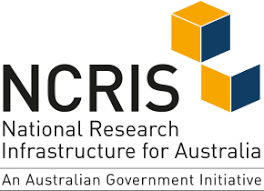CTA-Oz Meeting 2020 #2
CTA-Oz Meeting 2020 #2
This meeting continues the regular series of CTA-Australia meeting to develop the links between Australian astronomy and the science of the next-generation TeV gamma-ray facility - the Cherenkov Telescope Array (CTA).
Due to the current situation, this will be a remote meeting!
Remote access: Zoom https://adelaide.zoom.us/j/99976976294?pwd=MFdqT2NVd0NxcDdqSDZjTnhhQ1Qydz09
Please note that there is no registration fee for this event thanks to an NCRIS grant via Astronomy Australia Ltd. (AAL).


Keynote Speakers
All
Scientific Organising Committee
Gavin Rowell, Uni Adelaide, Australia
Sabrina Einecke, Uni Adelaide, Australia
Local Organising Committee
Gavin Rowell, Uni Adelaide
Sabrina Einecke, Uni Adelaide
Paddy McGee, Uni Adelaide
Talk durations
-
Invited talks: 20min (18+2)
- Contributed talks: 20min (18+2)
-
-
10:00
→
10:20
CTA Status Update 20m
This talk will provide a brief update on the status of CTA, both the CTA Consortium (CTAC) and the CTA Observatory (CTAO).
Speaker: Gavin Rowell (University of Adelaide) -
10:20
→
10:40
Update on Adelaide Activities 20m
I will give an update on the different activities pursued in Adelaide. This includes an update of activities in the SST group and the Australian site investigation.
Speaker: Sabrina Einecke (The University of Adelaide, Australia) -
10:40
→
11:00
Morning Tea 20m
-
11:00
→
11:20
GASKAP Update 20m
The Galactic ASKAP (GASKAP) Survey will map HI and OH throughout a large portion of the Milky Way and Magellanic System. I will present an update on the current status of the survey and the Pilot Phase I HI data, which covered the Small Magellanic Cloud, a region in the Milky Way, and the Galactic Centre. I will also outline our current plans to observe the Large Magellanic Cloud in HI for the Pilot Phase II.
Speaker: Katie Jameson (CSIRO) -
11:20
→
11:40
Update on GOTO -LST1 Activities on La Palma 20m
I will discuss the current status of GOTO and GOTO-related activities on La Palma as we continue to develop the program for joint observations with CTA LST-1. Recently, GRB 201015A was promptly observed with MAGIC and GOTO, showcasing the benefits of joint observations of prompt signatures of optical and VHE gamma-ray transients. I will discuss a program direction that GOTO and CTA LST-1 will undertake for joint observations of exciting transient events.
Speaker: Kendall Ackley (Monash University) -
11:40
→
12:00
Update on various HESS, eROSITA, ASKAP, MWA, ATCA projects 20mSpeaker: Miroslav Filipovic (Western Sydney University)
-
12:00
→
13:00
Lunch 1h
-
13:00
→
13:20
Update on the Mopra CO Survey 20m
The Mopra Southern Galactic Plane CO Survey covers more than 200 square degrees of the galactic plane, from l=250 to +11 degrees between -1 < b < 1 degrees in the J = 1-0 line of the three most common CO isotopologues (12CO, 13CO and C18O). I will show preliminary results of our final data release, including position-velocity plots and a catalogue of molecular cloud clumps in C18O, which are some of the densest regions on the galactic plane, of particular interest to CTA scientists.
Speaker: Dr Catherine Braiding (School of Physics, University of New South Wales) -
13:20
→
13:40
The Bright and Unknown - Modelling the Cosmic-ray and Gamma-ray Morphology towards HESS J1804-216 20m
HESS J1804-216 is one of the brightest yet most mysterious TeV gamma-ray sources discovered so far. Previous arcminute-scale investigations of the interstellar medium (ISM) surrounding this source revealed that HESS J1804-216 is likely powered by a middle-aged supernova remnant (SNR) or pulsar. SNRs are believed to accelerate both cosmic-ray protons and electrons at their shock front. These cosmic rays interact with the ISM and produce TeV gamma rays. In this contribution, the measurements of the ISM will be summarised and the different emission scenarios will be discussed. Moreover, spatial and spectral distributions of cosmic rays are generated for a range of model parameters. Gamma-ray morphology maps are created based on these cosmic-ray distributions. The modelled morphologies of two nearby potential cosmic-ray accelerators -- SNR G8.7-0.1 and the progenitor SNR of PSR J1803-2137 -- and their comparison to recent observations will be discussed. More detailed features in the morphology may be resolved with the next-generation Cherenkov Telescope Array, which will provide unprecedented angular resolution and sensitivity.
Speaker: Kirsty Feijen (School of Physical Sciences, University of Adelaide) -
13:40
→
14:00
Explaining the extended GeV gamma-ray emission adjacent to HESS J1825-137 20m
HESS J1825-137 is one of the most powerful and luminous TeV gamma-ray pulsar wind nebulae (PWN). To the south of HESS J1825-137, Fermi -LAT observation revealed a new region of GeV gamma-ray emission. This study presents gas data and spectral energy distribution (SED) modelling towards the GeV emission to understand the underlying particle acceleration. Lying to the north of HESS J1825-137, HESS J1826-130 is a possible PeVatron candidate and will be the focus of future multizone modelling.
Speaker: Tiffany Collins (The University of Adelaide) -
14:00
→
14:20
Modelling the TeV Diffuse Emission with GALPROP 20m
Multi-TeV cosmic rays (CRs) are trapped within the Milky Way by the galactic magnetic field and diffuse through the interstellar medium (ISM) for up to a hundred million years, losing energy via various processes. This leads to a "sea" of high-energy particles around the galactic plane, colloquially known as the TeV CR sea. This sea is poorly understood and presents a challenge for modern day and future imaging atmospheric Cherenkov telescopes such as the Cherenkov Telescope Array (CTA), which must subtract this background emission carefully to reveal discrete and localised sources. To address this, we utilise the three-dimensional simulation software GALPROP to vary the CR accelerator distributions in the Milky Way, adjusting the ratio between those located in the spiral arms and the galactic disk. Understanding the spatial distributions of CR accelerators in the Milky Way is the first step in creating a more detailed picture of the high energy dynamics within our galaxy, improving our understanding of the TeV CR sea. A detailed, quantitative analysis of the TeV CR sea predicted by GALPROP is performed, and for the first time these predictions will be applied to results from the HESS TeV galactic plane survey, providing the first comparison between CR diffusion models and the results from ground based gamma-ray telescopes. These results are also compared to the proposed sensitivity of the 10-year CTA galactic plane survey plans.
Speaker: Peter Marinos (The University of Adelaide) -
14:20
→
14:40
Project Update: Towards a Cherenkov Telescope Ring 20m
The extreme and often varying nature of Active Galactic Nuclei can be investigated by observations of very-high-energy gamma rays. Studying their long-term behaviour and flaring episodes requires the ability to take continuous observations over large spans of time. The Cherenkov Telescope Ring is thus a project to establish a worldwide network of Imaging Air Cherenkov Telescopes (IACT). This will allow for long-term continuous observations and 24-hour follow-up availability in case of transient events. Establishing a site in Australia will be crucial to obtain a full-sky coverage. The performance of an IACT site depends on the number of telescopes, their layout, and their height. To investigate possibilities for an Australian site, simulations need to be made and analysed. In this talk the concept and science cases of a Cherenkov Telescope Ring will be briefly introduced, and preliminary comparisons of simulated site performance will be presented.
Speaker: Simon Lee (School of Physical Sciences, University of Adelaide) -
14:40
→
15:00
Afternoon Tea 20m
-
15:00
→
15:20
Hunting for dark matter with CTA 20m
In this talk I will report on work in progress showing how CTA will probe or constrain dark matter particles featured by plausible particle physics theories.
Speaker: Csaba Balazs (School of Physics and Astronomy, Monash University) -
15:20
→
15:40
Probing the millisecond pulsar interpretation of the Galactic center gamma-ray excess 20m
Data from the Fermi-Large Area Telescope has revealed some strong, unexplained, diffuse, non-thermal emission coming from the Galactic bulge which is prominent in the gamma-ray energy range 1-10 GeV with a peak at ~2 GeV. This extended gamma-ray excess in the Milky Way center has been labeled the Galactic center gamma-ray excess (GCE). The origin of the GCE has been vigorously discussed in the literature and the proposed sources include self-annihilating WIMP dark matter and a previously unknown population of millisecond pulsars (MSPs). Here we investigate a potential origin for this putative MSP population by constructing a synthetic MSP population using the Binary Stellar Evolution (BSE) module of the Astrophysical Multipurpose Software Environment (AMUSE). Specifically, we want to establish whether gamma-ray emission from an MSP population arising from the accretion induced collapse (AIC) of O-Ne white dwarfs in Galactic bulge binary systems can explain the GCE. Furthermore, we investigate the X-ray emission from the neutron stars that, after AIC has occurred, accretes further mass from their companion stars. The X-ray and gamma-ray emission of the synthetic population are traced across cosmic time to determine whether it can explain the GCE while simultaneously satisfying the observed upper limits given by the number of bright (L_x>10^36 erg/s), low-mass X-ray binaries (LMXBs) in the Inner Galaxy. We find that a population of MSPs formed in the Galactic bulge via AIC of massive WDs and the following LMXB phase satisfy all current observational constraints. This putative population of MSPs in the inner Galaxy can self consistently explain the Galactic center gamma-ray excess.
Speaker: Anuj Gautam (The Australian National University) - 16:00 → 17:00
-
17:00
→
17:20
Using Interstellar Clouds to Search for Galactic PeVatrons 20m
Interstellar clouds can act as target material for hadronic cosmic rays; gamma rays subsequently produced through inelastic proton-proton collisions and spatially associated with such clouds can provide a key indicator of energetic particle acceleration. However, even in the case that particle acceleration proceeds up to PeV energies, the system of accelerator and nearby target material must fulfil certain conditions in order to produce a detectable gamma-ray flux. In this study, we rigorously characterise the necessary properties of both cloud and accelerator. By using available Supernova Remnant (SNR) and interstellar cloud catalogues, we produce a ranked shortlist of the most promising target systems that would be detectable by the future Cherenkov Telescope Array (CTA), in the case that particles are accelerated to PeV energies in the SNR.
Speaker: Alison Mitchell (Physik-Institut, Universitat Zurich) -
17:20
→
17:30
CTA Planetarium Show 10m
10 minutes long Full-Dome show on High Energy Astronomy and the CTA. This show will be displayed in planetariums all over the world.
Speaker: Kerem Cubuk
-
10:00
→
10:20
